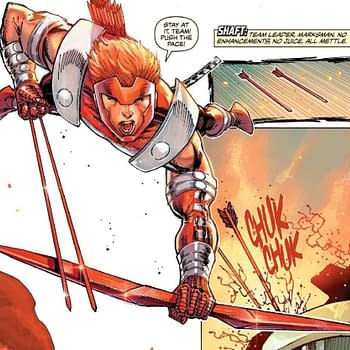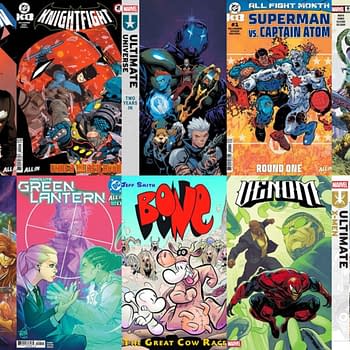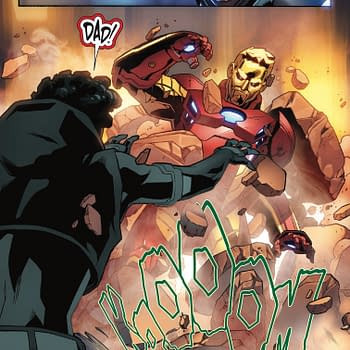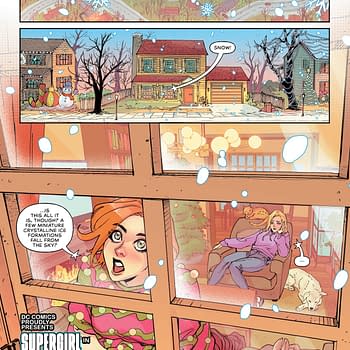Posted in: Comics | Tagged: Comics, infinity, jonathan hickman, marvel
Marvel's Infinity Event is Tailored To Be Inclusive
Event comics can be confusing, even for readers who follow several related comic storylines. One of the criticisms that companies face when they stage big event comics is that they are simply trying to sell more books by forcing readers to buy related titles and catch up on several franchises in order to fully understand and enjoy the event books. And for those who are not prepared to do that, well, they miss out or fall behind, rendering the event comic itself an exclusive thing, which backfires on the business model. Marvel's advertising for Infinity calls it the "comic event of the year", and if this seems like hype, the numbers have been there to justify this claim. By afternoon on the day of the first Infinity comic's release, 250,000 comics had sold out on the Diamond distributor level, as retailers placed calls to reorder the book that day. But does this suggest the comic was somehow more appealing or more accessible to readers, generating this demand?
Though it has a cast of 53 known Marvel characters, one of the largest line-ups in Marvel history, Infinity #1 may be one of the least excluding event comics ever launched by Marvel due to the "chapter" construction of its storyline, the extra explanatory material provided in the book, and the careful use of exposition as events are unfolding in the comic. It can't be a coincidence that Marvel's "comic event of the year" is so conscientiously crafted to include readers and make sure no one gets lost along the way. It represents a step in the right direction for event comics in general, opening the gates for new readers and those who choose to follow only their favorite franchise characters within the Marvel universe.

The explanatory material provided in Infinity #1 is one of the most ambitious schemes to date from a Marvel event book. The "cast" page featured in the comic is not only impressive, but a returning point of reference to flip back to as you read to remind yourself, not only what characters' names are, since they are not always called by name in the panels depicting them in action, but also to remind you of the various teams, heroic and nefarious, at work in the comic. It reminds the reader what loyalties exist, what relationships are in play, and as those teams separate on missions during the story itself, it will still be obvious which groups are essentially working together if things get too chaotic for the reader. From the Illuminati to the Builders and the expanded group of Avengers, teams have never been so important to understanding a big event's plot.

While reading Infinity #1, readers will notice that there is narrative text sprinkled through the comic in each chapter. Sometimes this narrative appears with a blue background, sometimes with a black background designed to stand out from the artwork and keep the reader on track. This is used sparingly, but consistently, and the explanations are pared down to essential back-story, particularly defining the different teams and races involved in the developing conflicts. This actually makes it possible to have never read any of Hickman's work on Avengers or New Avengers and still read and follow Infinity #1. Using exposition like this is not a new concept, but there is a particular emphasis on making sure that readers have the necessary tools to follow the comic within its own pages that is clearly a priority. While the narrative provides information and history, dialogue between the characters helps the reader fill out their knowledge of personalities and relationships as they progress through the story.

Infinity #1 feels, in many ways, like a large cinematic production with many moving parts constructing a total affect for the reader. Like Marvel's movies, it is designed for the casual reader as well as the very knowledgeable fan. It has to strike a fine balance between keeping long-time Marvel readers satisfied with the intricacy of its story and keeping the door open for new readers to step on board. Other event comics have attempted to do this to a lesser degree in the past, but Infinity actually delivers in this respect. An influx of newer readers may be one of the biggest factors that delivered a sell-out book on opening day, comparable to Marvel's blockbuster films.
Hannah Means-Shannon is a regular contributor at Bleeding Cool, writes and blogs about comics for TRIP CITY and Sequart.org, and is currently working on books about Neil Gaiman and Alan Moore for Sequart. She is @hannahmenzies on Twitter and hannahmenziesblog on WordPress. Find her bio here.

















